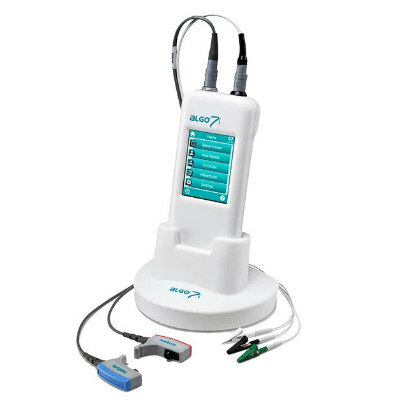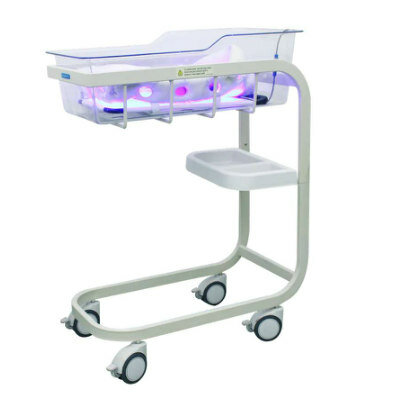Computer Vision Analyzes Stroke Rehabilitation Process
|
By HospiMedica International staff writers Posted on 31 Jan 2018 |

Image: Red trajectories show grasp movements after stroke, while green trajectories show rehabilitation (Photo courtesy of Tabea Kraus/ ETH).
A new study shows how optogenetics and machine learning can be used to analyze changes in motor skills, aiding stroke patient recovery.
Developed at the Swiss Federal Institute of Technology (ETH; Zurich, Switzerland), the University of Heidelberg (Germany), and other institutions, the new therapeutic approach is based on using optogenetics to activate corticospinal circuitry. The optogenetic stimulation, in conjunction with intense, scheduled rehabilitation can lead to the restoration of lost movement patterns (rather than induced compensatory actions), as revealed by a computer vision-based automatic behavior analysis in a stroke model study in rats.
The rat movements were recorded with a video camera and automatically analyzed to monitor the rehabilitation process to adjust the optogenetic stimulation. The results revealed that optogenetically activated corticospinal neurons promote axonal sprouting from the intact to the denervated cervical hemi-cord. Conversely, silencing subsets of corticospinal neurons in the recovered animals resulted in mistargeting of restored grasping function, identifying reestablishment of specific, anatomically localized cortical microcircuits. The study was published on October 30, 2017, in Nature Communications.
“Using our automatic evaluation of the movement processes, we were able to demonstrate a full recovery,” said senior author Professor Björn Ommer, PhD, of the Heidelberg University Interdisciplinary Center for Scientific Computing (IWR). “The new computer vision technique is able to quantify even the slightest changes in motor functions. By recording and analyzing the movements, we can objectively assess whether there was true restoration of the original function or merely compensation.”
“Neurorehabilitation is the only treatment option for the majority of stroke victims. Many approaches in basic science and in the clinic aim to trigger regeneration processes post-stroke by stimulating healthy brain regions of indeterminate size,” said lead author neuroscientist Anna-Sophia Wahl, MD, PhD, of ETH. “These results provide a conceptual framework to improve established clinical techniques such as transcranial magnetic or transcranial direct current stimulation in stroke patients.”
Optogenetics is a biological technique which involves the use of light to control cells in living tissue that have been genetically modified to express light-sensitive ion channels. For neuromodulation, it is used to control and monitor the activities of individual neurons in living tissue. Key reagents in optogenetics include light-sensitive proteins, such as channelrhodopsin, halorhodopsin, and archaerhodopsin, while optical recording of neuronal activities can be made with the help of optogenetic sensors for calcium (GCaMP), vesicular release (synapto-pHluorin), Neurotransmitter (GluSnFRs), or membrane voltage.
Related Links:
Swiss Federal Institute of Technology
University of Heidelberg
Developed at the Swiss Federal Institute of Technology (ETH; Zurich, Switzerland), the University of Heidelberg (Germany), and other institutions, the new therapeutic approach is based on using optogenetics to activate corticospinal circuitry. The optogenetic stimulation, in conjunction with intense, scheduled rehabilitation can lead to the restoration of lost movement patterns (rather than induced compensatory actions), as revealed by a computer vision-based automatic behavior analysis in a stroke model study in rats.
The rat movements were recorded with a video camera and automatically analyzed to monitor the rehabilitation process to adjust the optogenetic stimulation. The results revealed that optogenetically activated corticospinal neurons promote axonal sprouting from the intact to the denervated cervical hemi-cord. Conversely, silencing subsets of corticospinal neurons in the recovered animals resulted in mistargeting of restored grasping function, identifying reestablishment of specific, anatomically localized cortical microcircuits. The study was published on October 30, 2017, in Nature Communications.
“Using our automatic evaluation of the movement processes, we were able to demonstrate a full recovery,” said senior author Professor Björn Ommer, PhD, of the Heidelberg University Interdisciplinary Center for Scientific Computing (IWR). “The new computer vision technique is able to quantify even the slightest changes in motor functions. By recording and analyzing the movements, we can objectively assess whether there was true restoration of the original function or merely compensation.”
“Neurorehabilitation is the only treatment option for the majority of stroke victims. Many approaches in basic science and in the clinic aim to trigger regeneration processes post-stroke by stimulating healthy brain regions of indeterminate size,” said lead author neuroscientist Anna-Sophia Wahl, MD, PhD, of ETH. “These results provide a conceptual framework to improve established clinical techniques such as transcranial magnetic or transcranial direct current stimulation in stroke patients.”
Optogenetics is a biological technique which involves the use of light to control cells in living tissue that have been genetically modified to express light-sensitive ion channels. For neuromodulation, it is used to control and monitor the activities of individual neurons in living tissue. Key reagents in optogenetics include light-sensitive proteins, such as channelrhodopsin, halorhodopsin, and archaerhodopsin, while optical recording of neuronal activities can be made with the help of optogenetic sensors for calcium (GCaMP), vesicular release (synapto-pHluorin), Neurotransmitter (GluSnFRs), or membrane voltage.
Related Links:
Swiss Federal Institute of Technology
University of Heidelberg
Latest Health IT News
- Machine Learning Model Improves Mortality Risk Prediction for Cardiac Surgery Patients
- Strategic Collaboration to Develop and Integrate Generative AI into Healthcare
- AI-Enabled Operating Rooms Solution Helps Hospitals Maximize Utilization and Unlock Capacity
- AI Predicts Pancreatic Cancer Three Years before Diagnosis from Patients’ Medical Records
- First Fully Autonomous Generative AI Personalized Medical Authorizations System Reduces Care Delay
- Electronic Health Records May Be Key to Improving Patient Care, Study Finds
- AI Trained for Specific Vocal Biomarkers Could Accurately Predict Coronary Artery Disease
- First-Ever AI Test for Early Diagnosis of Alzheimer’s to Be Expanded to Diagnosis of Parkinson’s Disease
- New Self-Learning AI-Based Algorithm Reads Electrocardiograms to Spot Unseen Signs of Heart Failure
- Autonomous Robot Performs COVID-19 Nasal Swab Tests

- Statistical Tool Predicts COVID-19 Peaks Worldwide
- Wireless-Controlled Soft Neural Implant Stimulates Brain Cells
- Tiny Polymer Stent Could Treat Pediatric Urethral Strictures
- Human Torso Simulator Helps Design Brace Innovations
- 3D Bioprinting Rebuilds the Human Heart
- Nanodrone Detects Toxic Gases in Hazardous Environments
Channels
Artificial Intelligence
view channel
AI-Powered Algorithm to Revolutionize Detection of Atrial Fibrillation
Atrial fibrillation (AFib), a condition characterized by an irregular and often rapid heart rate, is linked to increased risks of stroke and heart failure. This is because the irregular heartbeat in AFib... Read more
AI Diagnostic Tool Accurately Detects Valvular Disorders Often Missed by Doctors
Doctors generally use stethoscopes to listen for the characteristic lub-dub sounds made by heart valves opening and closing. They also listen for less prominent sounds that indicate problems with these valves.... Read moreCritical Care
view channel
Deep-Learning Model Predicts Arrhythmia 30 Minutes before Onset
Atrial fibrillation, the most common type of cardiac arrhythmia worldwide, affected approximately 59 million people in 2019. Characterized by an irregular and often rapid heart rate, atrial fibrillation... Read more
Breakthrough Technology Combines Detection and Treatment of Nerve-Related Disorders in Single Procedure
The peripheral nervous system (PNS) serves as the communication network that links the brain and spinal cord to every other part of the body. It consists of two parts: the somatic nervous system, which... Read moreSurgical Techniques
view channel
Hydrogel-Based Miniaturized Electric Generators to Power Biomedical Devices
The development of engineered devices that can harvest and convert the mechanical motion of the human body into electricity is essential for powering bioelectronic devices. This mechanoelectrical energy... Read moreWearable Technology Monitors and Analyzes Surgeons' Posture during Long Surgical Procedures
The physical strain associated with the static postures maintained by neurosurgeons during long operations can lead to fatigue and musculoskeletal problems. An objective assessment of surgical ergonomics... Read more.jpg)
Custom 3D-Printed Orthopedic Implants Transform Joint Replacement Surgery
The evolving field of 3D printing is revolutionizing orthopedics, especially for individuals requiring joint replacement surgeries where traditional implants fail to provide a solution. Although most people... Read more
Cutting-Edge Imaging Platform Detects Residual Breast Cancer Missed During Lumpectomy Surgery
Breast cancer is becoming increasingly common, with statistics indicating that 1 in 8 women will develop the disease in their lifetime. Lumpectomy remains the predominant surgical intervention for treating... Read moreHealth IT
view channel
Machine Learning Model Improves Mortality Risk Prediction for Cardiac Surgery Patients
Machine learning algorithms have been deployed to create predictive models in various medical fields, with some demonstrating improved outcomes compared to their standard-of-care counterparts.... Read more
Strategic Collaboration to Develop and Integrate Generative AI into Healthcare
Top industry experts have underscored the immediate requirement for healthcare systems and hospitals to respond to severe cost and margin pressures. Close to half of U.S. hospitals ended 2022 in the red... Read more
AI-Enabled Operating Rooms Solution Helps Hospitals Maximize Utilization and Unlock Capacity
For healthcare organizations, optimizing operating room (OR) utilization during prime time hours is a complex challenge. Surgeons and clinics face difficulties in finding available slots for booking cases,... Read more
AI Predicts Pancreatic Cancer Three Years before Diagnosis from Patients’ Medical Records
Screening for common cancers like breast, cervix, and prostate cancer relies on relatively simple and highly effective techniques, such as mammograms, Pap smears, and blood tests. These methods have revolutionized... Read morePoint of Care
view channel
Critical Bleeding Management System to Help Hospitals Further Standardize Viscoelastic Testing
Surgical procedures are often accompanied by significant blood loss and the subsequent high likelihood of the need for allogeneic blood transfusions. These transfusions, while critical, are linked to various... Read more
Point of Care HIV Test Enables Early Infection Diagnosis for Infants
Early diagnosis and initiation of treatment are crucial for the survival of infants infected with HIV (human immunodeficiency virus). Without treatment, approximately 50% of infants who acquire HIV during... Read more
Whole Blood Rapid Test Aids Assessment of Concussion at Patient's Bedside
In the United States annually, approximately five million individuals seek emergency department care for traumatic brain injuries (TBIs), yet over half of those suspecting a concussion may never get it checked.... Read more
New Generation Glucose Hospital Meter System Ensures Accurate, Interference-Free and Safe Use
A new generation glucose hospital meter system now comes with several features that make hospital glucose testing easier and more secure while continuing to offer accuracy, freedom from interference, and... Read moreBusiness
view channel
Johnson & Johnson Acquires Cardiovascular Medical Device Company Shockwave Medical
Johnson & Johnson (New Brunswick, N.J., USA) and Shockwave Medical (Santa Clara, CA, USA) have entered into a definitive agreement under which Johnson & Johnson will acquire all of Shockwave’s... Read more
















